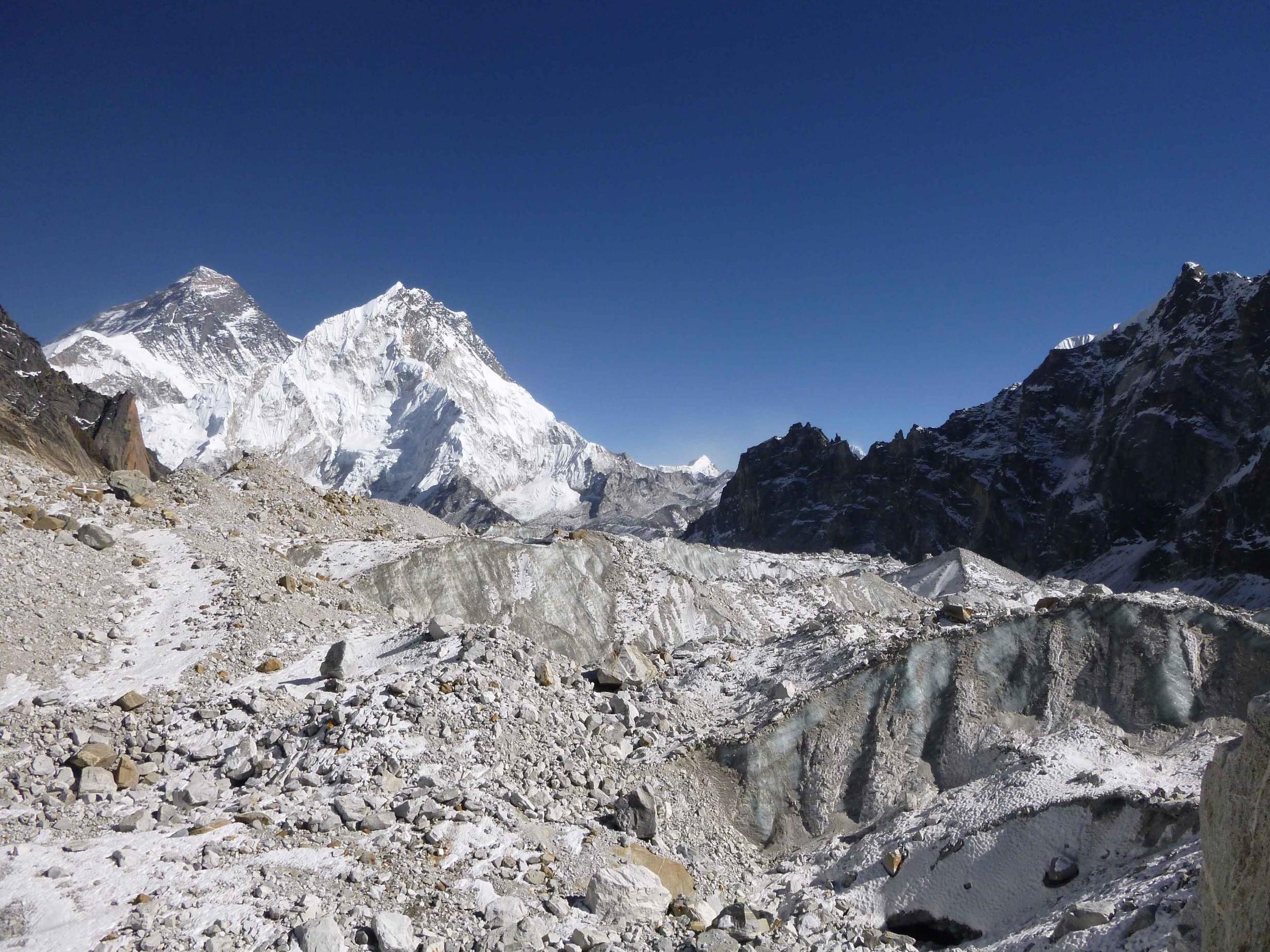Melting of Himalayan glaciers has doubled in past 20 years, study warns
Two-thirds of ice cover in Himalayas could be gone by 2100

The rate glaciers are melting in the Himalayas has doubled in just 20 years, according to a study which examined 40 years of satellite data.
Glaciers have been losing more than a vertical foot and a half of ice each year since 2000. This equates to 8 billion tons of water being released – or the equivalent of 3.2 million Olympic-size swimming pools.
The rate of melting is more than double that which took place between 1975 and 2000, according to the study published in Science Advances. It is the latest indication climate change is threatening the water supplies for 800 million people living downstream.
“This is the clearest picture yet of how fast Himalayan glaciers are melting over this time interval, and why,” said lead author Joshua Maurer, a PhD candidate at Columbia University.
These glaciers currently harbour 600 billion tons of ice and they may have lost as much as one quarter of their mass over the past four decades. On Mount Everest long-lost corpses of climbers are even starting to emerge from the ice.

At this rate of decline, two-thirds of the Himalayas’ ice cover – referred to as Earth’s ‘Third Pole’ – will be gone by 2100.
Rising temperatures are to blame, according to scientists who estimate that from 2000 to 2016 temperatures were 1C warmer than between 1975 and 2000.
Scientists scanned satellite images from 650 glaciers spanning 2,000 kilometres from west to east. Many of the 20th century observations were from declassified photographs taken by US spy satellites. Researchers used these to create 3D models that could show the changing elevations of the glacier over time.
Between 1975 and 2000 glaciers lost on average 0.25 metres of ice. In 2000 this loss increased to around half a metre every year and at lower levels the decline is up to five metres a year.
Another driving factor is Asian nations burning more and more fossil fuels, sending soot into the sky. This eventually lands on the surface of the glacier where it absorbs solar energy and accelerates melting, researchers belive.
The Himalayas are not melting as fast as the Alps, but the general progression is similar.
Eight-hundred million people depend on seasonal runoff from Himalayan glaciers for irrigation, hydropower and water. There is currently more run-off during warm seasons but scientists say within the next few decades this will decrease as the glaciers lose mass. This will eventually lead to water shortages.
The study shows that “even glaciers in the highest mountains of the world are responding to global air temperature increases driven by the combustion of fossil fuels,” said Joseph Shea, a glacial geographer at the University of Northern British Columbia who was not involved in the study.

“In the long term, this will lead to changes in the timing and magnitude of streamflow in a heavily populated region.”
“It shows how endangered [the Himalayas] are if climate change continues at the same pace in the coming decades,” said Etienne Berthier, a glaciologist at France’s Laboratory for Studies in Geophysics and Spatial Oceanography, who also was not involved in the study.
The study follows research from last month that found glaciers in the high-mountain regions around the Himalayas were shrinking 1.6 times faster between 2000 and 2016 than the period between 1951 to 2007.
“A lot of the climate projections suggest the melt will continue to accelerate,” lead researcher Dr Hamish Pritchard, a glaciologist from the British Antarctic Survey (BAS), told The Independent at the time.
Populations in the high-mountain Asia region are particularly vulnerable to water shortages and in the past century, drought has caused more than six million deaths.
Join our commenting forum
Join thought-provoking conversations, follow other Independent readers and see their replies
Comments
Bookmark popover
Removed from bookmarks